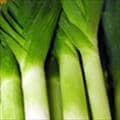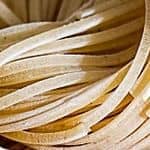Top 10 Foods Lowest in Potassium For People with Kidney Disease

The kidneys regulate potassium (and all electrolyte) levels in your body. For those diagnosed with chronic kidney disease (CKD) you may have to limit consumption of potassium and other electrolytes. (2)
The list below serves as a suggestion of low potassium foods for your diet and is for informational purposes only. Please work with your primary care provider to establish a proper diet.
Note: The current daily value (DV) for potassium is 4700 milligrams (mg), recently raised from 3500mg by the FDA. (1) This is a target meant for healthy people and is the %DV you will see on product labels in the United States. People with kidney disease should eat less potassium. Please use the percent daily value in this article only as a guide to compare foods and not as a target!
Generally people with CKD should watch their protein intake, as well as intake of other electrolytes. Since other electrolytes should also be watched, the amounts of sodium, phosphorus, magnesium, and calcium are also listed below each food in this list.
Foods low in potassium include most refined fats and oils, grains like cornmeal, white rice, and pasta, cheeses like soft goat cheese, and blueberries, eggs, leeks, Napa cabbage, and chia seeds. Boiling vegetables in water and discarding the water can help reduce their potassium and electrolyte content. Further, you can also leech more minerals out by soaking vegetables in water before consumption.
For more information on a CKD diet see the article from Medline Plus and Kidney.org. For more low potassium food ideas see the nutrient ranking tool, nutrient ratio tool, and the list of low potassium vegetables.
List of Low Potassium Foods
 1 Refined Oils (Flaxseed Oil)
1 Refined Oils (Flaxseed Oil)| Potassium per Tblsp | Potassium per 100g | Potassium per 200 Calories |
|---|---|---|
| 0mg (0% DV) | 0mg (0% DV) | 0mg (0% DV) |
See all fats and oils low in potassium.
 2 Soft Goat Cheese
2 Soft Goat Cheese| Potassium per Oz | Potassium per 100g | Potassium per 200 Calories |
|---|---|---|
| 7mg (0% DV) | 26mg (1% DV) | 20mg (0% DV) |
See the ranking of all dairy foods low in potassium.
 3 Cornmeal (Grits)
3 Cornmeal (Grits)| Potassium per Cup Cooked | Potassium per 100g | Potassium per 200 Calories |
|---|---|---|
| 51mg (1% DV) | 22mg (0% DV) | 68mg (1% DV) |
See all grains low in potassium.
 4 White Rice
4 White Rice| Potassium per Cup Cooked | Potassium per 100g | Potassium per 200 Calories |
|---|---|---|
| 55mg (1% DV) | 35mg (1% DV) | 54mg (1% DV) |
See all grains low in potassium.
 5 Eggs
5 Eggs| Potassium in 1 Large Egg | Potassium per 100g | Potassium per 200 Calories |
|---|---|---|
| 63mg (1% DV) | 126mg (3% DV) | 163mg (3% DV) |
 6 Napa Cabbage (Boiled and Drained)
6 Napa Cabbage (Boiled and Drained)| Potassium per Cup Cooked | Potassium per 100g | Potassium per 200 Calories |
|---|---|---|
| 95mg (2% DV) | 87mg (2% DV) | 1450mg (31% DV) |
Boiling and draining the water of vegetables will help reduce the potassium and mineral content.
Few vegetables are low in potassium, but you can see the ranking of all vegetables low in potassium.
 7 Leeks (Boiled and Drained)
7 Leeks (Boiled and Drained)| Potassium per Leek | Potassium per 100g | Potassium per 200 Calories |
|---|---|---|
| 108mg (2% DV) | 87mg (2% DV) | 561mg (12% DV) |
Boiling and draining the water of vegetables will help reduce the potassium and mineral content.
Few vegetables are low in potassium, but you can see the ranking of all vegetables low in potassium.
 8 Whole Wheat Pasta
8 Whole Wheat Pasta| Potassium per Cup | Potassium per 100g | Potassium per 200 Calories |
|---|---|---|
| 112mg (2% DV) | 96mg (2% DV) | 129mg (3% DV) |
See all grains low in potassium.
 9 Blueberries
9 Blueberries| Potassium per Cup | Potassium per 100g | Potassium per 200 Calories |
|---|---|---|
| 114mg (2% DV) | 77mg (2% DV) | 270mg (6% DV) |
Few fruits are low in potassium, but you can see the complete ranking of fruits low in potassium.
 10 Chia Seeds
10 Chia Seeds| Potassium per oz(~2 Tblsp) | Potassium per 100g | Potassium per 200 Calories |
|---|---|---|
| 116mg (2% DV) | 407mg (9% DV) | 167mg (4% DV) |
Nuts and seeds are high in most minerals, but you can still see the ranking of nuts and seeds low in potassium.
About the Data
Data for the curated food lists comes from the USDA Food Data Central Repository.
You can check our data against the USDA by clicking the (Source) link at the bottom of each food listing.
Note: When checking data please be sure the serving sizes are the same. In the rare case you find any difference, please contact us and we will fix it right away.
About Nutrient Targets
Setting targets can provide a guide to healthy eating.
Some of the most popular targets include:- Daily Value (%DV) - The daily value (%DV) is a general guideline for consumption that will prevent deficiency of a particular nutrient in most people. The %DV refers to the percentage of an amount that's found in a single serving of a food. It also accounts for absorption factors. It is set by the U.S. FDA.
- Recommended Dietary Allowance (%RDA) - The RDA sets an average daily dietary intake level that is sufficient to meet the nutrient requirements of nearly all (97.5%) healthy individuals. It's more specific than the daily value, and varies by age and gender. The RDA is set by the US National Instutites of Health.
- Reference Dietary Intake (%RDI) -The reference dietary intake is similar to the recommended daily allowance, but is specific to age and gender. The RDI for amino acids is set by the U.N. World Health Organization.
- Adequate Intake (%AI) - This value is primarily used in reference to omega-3 and omega-6 fats. The Adequate Intake is set by the U.S. Institute of Medicine. Because there is less evidence to determine the ideal targets for consumption of these nutrients, the specific amount is considered to be less reliable. Using the term Adequate Intake, rather than one of the other terms, helps to emphasize that the ideal intake of that particular nutrient has not yet been scientifically determined.
See the Guide to Recommended Daily Intakes for more information.
Want to set your own targets? Sign up for an account and set custom targets in the daily meal planner.From the Nutrient Ranking Tool
Use the ranking tool links below to select foods and create your own food list to share or print.
- Foods High in Potassium
- Foods Low in Potassium
- Vegetables High in Potassium
- Fruits High in Potassium
- Vegetarian Foods High in Potassium
- Nuts High in Potassium
- Grains High in Potassium
- Beans High in Potassium
- Dairy High in Potassium
- Breakfast Cereals High in Potassium
- Fast Foods High in Potassium
View more nutrients with the nutrient ranking tool, or see ratios with the nutrient ratio tool.
Related
Data Sources and References
Try the recipe nutrition calculator, or daily meal planner.
Create a free account to log and track foods.
